Australia So Much to See

These documents explain the reasons for the change on Florabase Why Dryandras have changed their name andWhy names change.
Drosera stolonifera, Leafy Sundew (above)
A tiny Drosera plant with red tentacles around red lamina (modified leaves) which create
the insect catchers. These circular stickers have a broken circle (above right) and can look heart shaped. White five
petalled flowers with yellow stamens, with multiple flowers per stem.
Spring
Bridgetown, and occurs over a through the South
West, western Great Southern, and western Mid West regions, with some recorded from the Wheatbelt.
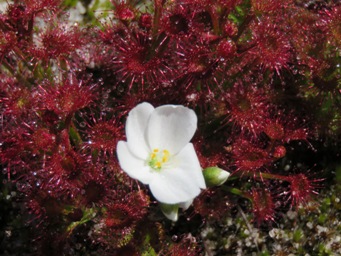
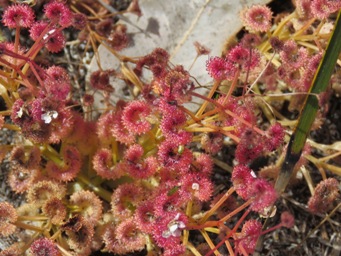
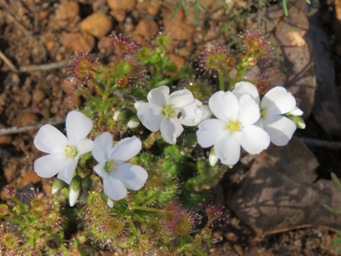
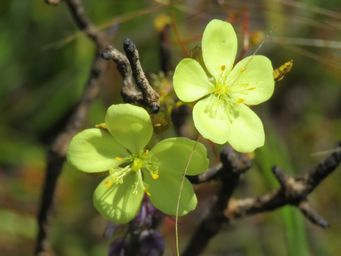
Drosera subhirtella, Sunny Rainbow (at right)
Delicate flowers with five petals in a soft lemon yellow colour, in a small cluster at top of stem. Style consists of branching filaments surrounding each stamen. Stems and buds are hairy. Circular lamina. Plant sprawls across other vegetation and grows to 400 millimetres.
Spring
Tonebridge (Boyup Brook), favouring winter wet areas and margins of swamps. Found through the Wheatbelt and into the adjacent South West and Great Southern regions, with occurrences in the Goldfields around Esperance, Ravensthorpe and Coolgardie
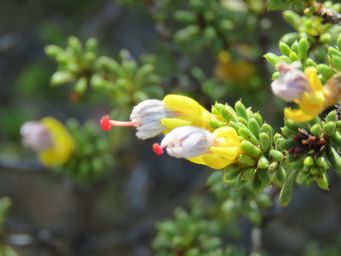
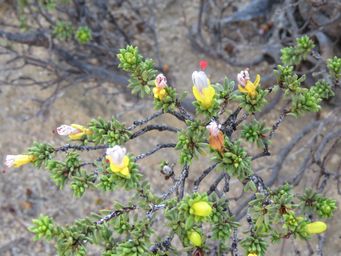
Drummondita hassellii 2013 (formerly also known as Drummondita hassellii var. hassellii and previously Philotheca hassellii), Rainbow
bush
A tubular flower that stands up like a candle. Sepals are green, petals can be red, green or yellow, stamens protrude from
the flower tube with the exposed upper third covered with white silky hairs. The red stigma and top of the style protrude further.
All flower parts may redden with age. Foliage short thick succulent leaves with tiny bumps crowded up the stems, a rounded end
is tipped with a small spine (mucro). In some areas, leaves are longer and finer, tuberculate (with small bumps) and terminate
in a point with a spine.
August
Moorine Rock, Shire of Yilgarn in the eastern Wheatbelt region, Western Australia. Found through the Wheatbelt and Great Southern, and into the Mid West and Goldfields regions. Favours yellow sand.
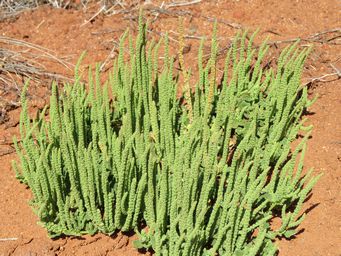
Dysphania kalpari, Rat's Tail, Green Crumbweed
Tiny cream stigmas and anthers can barely be seen protruding from the bobbly green flowers
along the stems, which grow upright from prostrate stems with serrated foliage.
August
Agnew, Shire of Leonora, Goldfields region,
Western Australia and can be found through the Pilbara and Goldfields, as well as in other states in semi-arid inland areas.